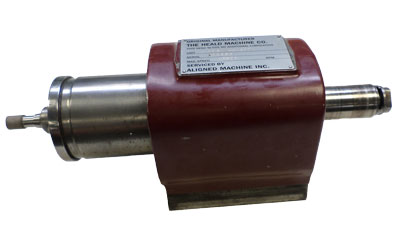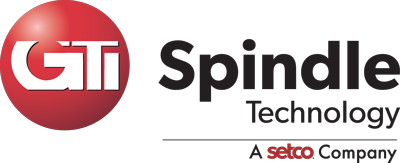There are a number of reasons why, when shopping for a spindle, you may consider purchasing a used one. The most straightforward is cost — if budget is a concern, a used spindle could be a good decision. The rationale could be more complex, as well, including loyalty to a particular brand or even specific model.
Whatever your reasons for shopping for a used spindle, there are a number of considerations you must keep in mind.
1) Application
Most spindle machinery can be used for a number of different applications, but that doesn’t mean that the stock spindle is ideally suited for all of them. If you’re looking to replace the spindle on a given piece of equipment, take some time to consider the actual jobs it has handled and might handle in the future. You may find that your uses have diverged from the spindle’s primarily designed purpose, and a different model might be better suited. Conversely, if you are processing steady work for a long term contract, you’ll need to make sure that the machine matches the specifications of the one you are replacing.
2) Specifications
This might seem like a no brainer, but a spindle’s specifications are among the most important considerations when shopping used.
 Spindles are often referred to by their brand or manufacturers name (OEM) and model or part number. For example, a Heald 405 is a belt driven grinding wheel spindle, aka a wheelhead spindle. The problem is that number, 405, is only about a quarter of the full part number. The rest of the part number lays out things like required lubrication type, specific spindle design, mounting group, and more.
Spindles are often referred to by their brand or manufacturers name (OEM) and model or part number. For example, a Heald 405 is a belt driven grinding wheel spindle, aka a wheelhead spindle. The problem is that number, 405, is only about a quarter of the full part number. The rest of the part number lays out things like required lubrication type, specific spindle design, mounting group, and more.
You could ask a lot of spindle dealers for a Heald 405 and they’ll hand you the first one they see on their shelf, paying no attention to the rest of that particular spindle’s attributes. In a worst case scenario, this can lead to severe equipment damage, expensive repairs, and costly downtime.
There are other specification factors to consider. For instance, tooling interfaces are not represented in part numbers, but they are obviously critical to get right. Spindles can also differ year by year, even within a model/part number. For that reason, it’s important to know the exact product information for the machine you’ll be using the spindle in, including the year it was built.
When shopping for a used spindle, be extremely explicit about the model you need.
3) Condition/What’s Included
Finally, there’s the condition of the spindle to think about, as well as what comes along with the purchase.
If you’re considering a spindle that needs rebuilding, for example, you should determine what work it needs and what those costs will be before making the purchase. Here’s a quick check checklist to help you evaluate the condition and the wisdom of the purchase:
- Time since last use
- Storage conditions, including rotation
- Runout of the shaft
- Taper condition of the shaft
- Documentation, including manuals, testing reports, maintenance logs, etc.
- Warranty inclusion; what are the terms?
- Recourse in event of issue
4) Source
To keep your staff safe and your production up and running, it’s extremely important that you carefully vet your used spindle dealer. Not every spindle dealer operates with integrity. To use an old cliché — if a deal on a used spindle seems like it’s too good to be true, it probably is.
Another sourcing consideration is whether you put your own time and energy into searching for a spindle, or hire an agent to help you. The same logic applies here: if an agent promises too much, or for too little, be suspect. If you are working with them for the first time, see if you can get some testimonials or talk to some of their customers.
No matter what your reason for shopping for a used spindle is, if you keep these basic considerations in mind, you’ll end up making a good purchase.

